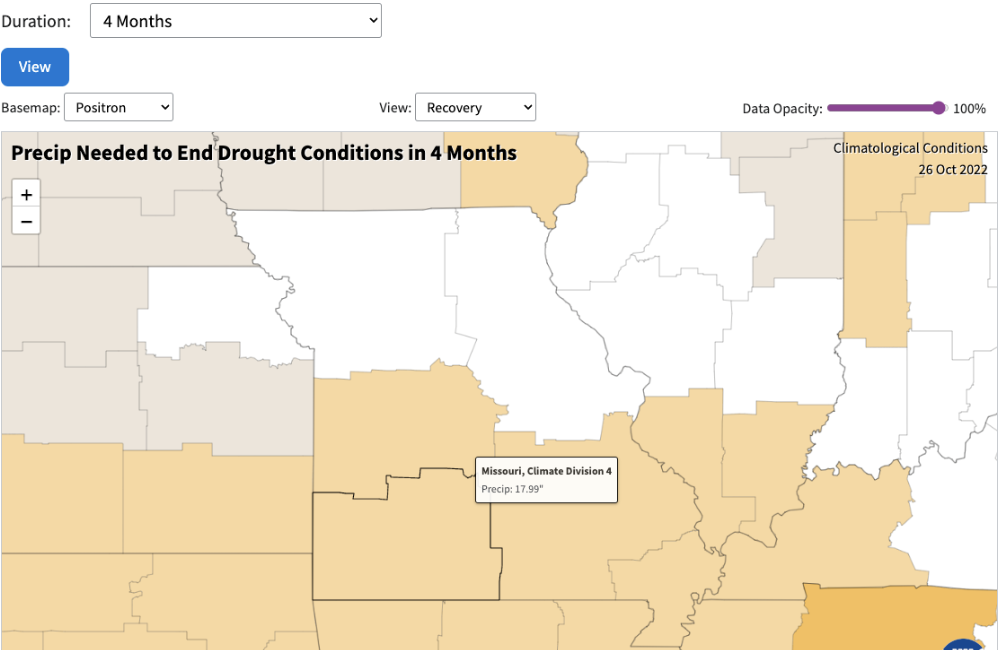
Many Missouri pastures took a bit of a beating this summer, especially in the southwestern portion of the state. The lack of moisture this year left most of the state running from abnormally dry to extreme drought levels. Fortunately, some heavy autumn rains have given us a much needed reprieve. However, some parts of Missouri are still going to need a significant amount of moisture this winter for spring pastures to grow and thrive.
While the 2023 edition of The Farmers’ Almanac is predicting a stormy, cold winter with a lot of snow for much of the Midwest, meteorologist Brandon Beck, with KY3 out of Springfield, shares climatologists are forecasting the weather to remain in the current La Nina pattern through at least February. This means most of the central US will remain in the current drought pattern, but there is a possible shift forecasted for late winter.
Regardless, the amount of moisture needed to ameliorate, or improve, the drought-stricken areas is significant. As Beck points out, moisture needed for the southwest Missouri climate division is substantially high.
“Extra precipitation will be needed to end the drought in a shorter time frame since we are heading into winter,” Brandon says.
Whether there will be enough time and moisture to rejuvenate the soil prior to spring planting is yet to be seen. In the meantime, it wouldn’t hurt to take a good look at the type of forages you have growing—or are trying to grow—in drought-stricken pastures. If those dry areas don’t get the amount of moisture needed to fully ameliorate, it’s time to consider making sure your herds have quality forages for summer grazing. The following are some of our favorite forages created for these circumstances.
Tall Fescue
Tall Fescue is easy to establish with a high yield. Its deep roots make this forage a great option for drought tolerance. Cow★Pro II is a non-toxic, endophyte-free tall fescue variety suitable for all classes of livestock.
Orchardgrass
Crown Royale Orchardgrass has excellent early seedling vigor, making it easy to establish. It also shows excellent winter hardiness and moderate drought resistance. Because of Crown Royale’s later maturity, this orchardgrass is a perfect companion for fescue, timothy, alfalfa and red and white clover.
Ryegrass
Ryegrass is another great option, specifically, Albion Tetraploid Perennial Ryegrass, as it has a deeper root system and is more heat and drought tolerant than other perennial ryegrasses.
Perennial Legumes
You can also consider an annual legume such as AberLasting Clover. This hardy clover is able to maintain its leaf water content for three weeks without watering, compared with two weeks for conventional white clover.
Another legume option is alfalfa. Alfalfa is drought resistant by nature because of its vast root system. Ameristand 427TQ is very high-yielding and has a fast recovery.
Whether or not Missouri experiences the weather it needs this winter, there are still options available to ensure your herd gets the nutrition it needs. While you’re thinking about your pasture plan, check out this tool Brandon shared with us to create your own moisture synopsis. This Drought Reduction Map from the National Centers for Environmental Information allows you to see just how much precipitation is needed to eliminate drought conditions in your area.
